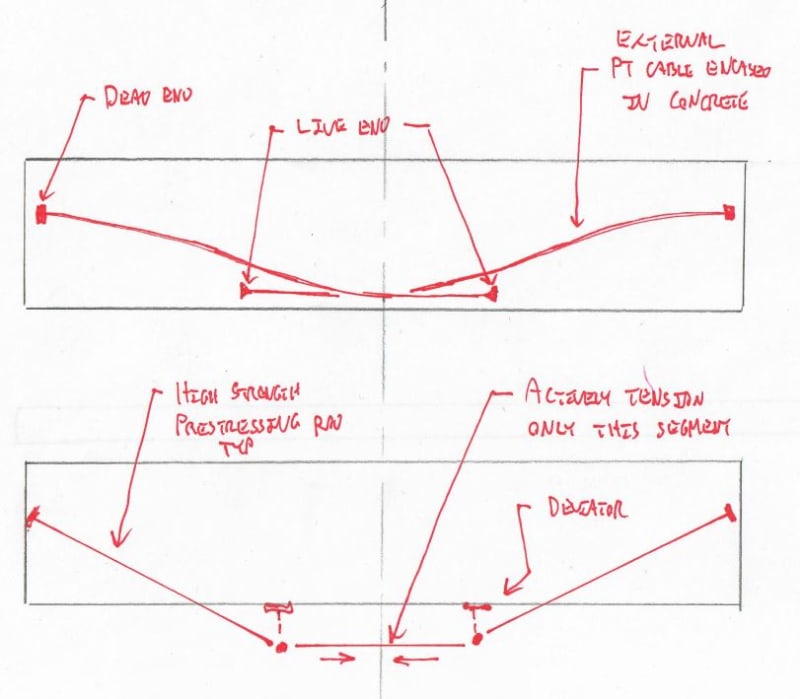ajk1
Structural
- Apr 22, 2011
- 1,791
In an exiting parking garage with post-tensioned (unbonded)tendons, it is desired to put new steel beams beside each existing p.t. concrete beam so that if all of the tendons fail the steel beams can take the load.
in a p.t. beam,
Question
Is it satisfactory to place the new steel beams on one side only of each existing conc beam? I am concerned that the existing bottom rebar in the slab will not be continuous between the new steel beams. Please see the attached sketch. Do you agree with this concern? If so, could place new steel beams each side of each existing p.t. conc beam, but this would double the on-site labour to install the beams, as well as a greater total weight of new steel.
in a p.t. beam,
Question
Is it satisfactory to place the new steel beams on one side only of each existing conc beam? I am concerned that the existing bottom rebar in the slab will not be continuous between the new steel beams. Please see the attached sketch. Do you agree with this concern? If so, could place new steel beams each side of each existing p.t. conc beam, but this would double the on-site labour to install the beams, as well as a greater total weight of new steel.






